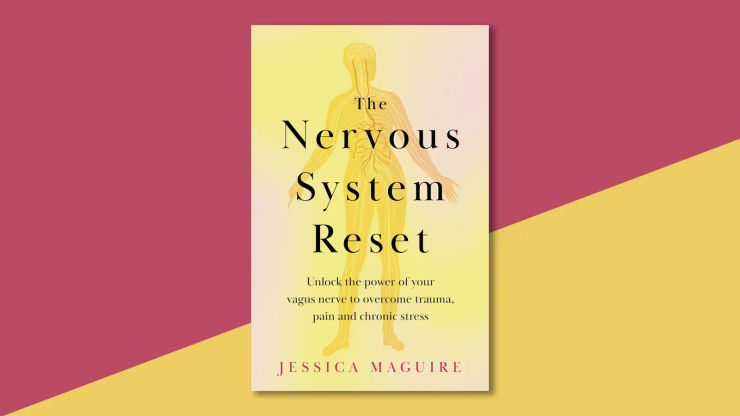When should I see a doctor? Periods: what’s normal, what’s not
No, you shouldn't have to put up with that: Dr Hazel Wallace on when to seek help with three common period problems.

Around 1.9 billion people on this planet menstruate. On average, each has a period every twenty-eight days (give or take), from around age thirteen to fifty-one, totalling 456 periods over a lifetime. Menstruation is a normal and healthy part of life, yet it’s something people are still reluctant to talk about, even when it’s causing them problems. One reason for this is the assumption that the symptoms they’re experiencing are normal; ‘something that comes with the territory.’ So when is a cramp, or a skipped period, something you need to visit a GP about? In this edited extract from her book, Not Just a Period, Dr Hazel Wallace offers some clarity.
How heavy is too heavy?
A lot of people (including you, perhaps?) believe that heavy periods are just bad luck. A recent survey from Wear White Again of 1,000 women who experienced heavy periods found that sixty-two percent of them didn’t realize that heavy menstrual bleeding (known as menorrhagia) is a diagnosable medical condition and instead assumed it was just something they had to put up with. Well, you don’t, and there are treatments that can help.
Heavy periods are not only a bit of a nuisance to deal with, but they have direct health consequences, such as iron deficiency anaemia and the fatigue that comes with it. There are also indirect health consequences that come as a result of avoiding social occasions and skipping exercise, out of fear of leaking.
‘Heavy periods are not only a nuisance, they have direct and indirect health consequences, such as anaemia, and the negative effects of avoiding social occasions and skipping exercise.’
So, what is a heavy period?
If we look at the guidelines, heavy periods can be defined as blood loss of 80ml or more (about half a teacup) and/or bleeding that lasts for more than seven days. It’s very difficult to know how much blood you’re losing, and perhaps a more practical definition is one from the National Institute for Health and Care Excellence (NICE), which defines a heavy period as ‘excessive blood loss that interferes with a woman’s physical, social, emotional and/or quality of life.’
Other signs of heavy periods are:
- Changing a tampon/pad every one to two hours, or having to empty a menstrual cup after only a few hours.
- Using two types of sanitary products at once.
- Passing large blood clots (>2.5 cm or the size of 10p coin).
- Regularly leaking through to your clothes or bedding.
- Avoiding daily activities, like exercise, or taking time off work due to your flow.
In about half of reported cases, no cause for the heavy bleeding is found, and this is called dysfunctional uterine bleeding (DUB). In some cases, heavy periods can be due to an underlying cause. Suffice to say, if you have heavy periods, it is important that you are checked to rule out any abnormalities.
Period pain
It is very common to experience some discomfort and cramping in the days before and during your period, but an estimated forty-five to ninety-five percent of women suffer with very painful periods (known as dysmenorrhoea) that interfere with their day-to-day life. Make no mistake, that’s huge. By some estimates, that would mean almost all women have very painful periods, and we’re just putting up with it!
Women with dysmenorrhoea have significantly reduced quality of life, poorer mood and sleep quality, and are less active during their periods than women without dysmenorrhoea.
‘If your pain is interfering with your usual activities, you should see your doctor.’
Most women with painful periods have mild pain that they can treat themselves at home. However, if your pain becomes more severe and is interfering with your usual activities, you should see your doctor, who can offer prescription medications and hormonal contraceptives that improve period pain. Painful periods can also be due to underlying medical conditions such as endometriosis, adenomyosis, broids, or pelvic inflammatory disease. This is known as secondary dysmenorrhoea. If your doctor suspects you have an underlying cause for your painful periods, they may refer you to a specialist gynaecologist for further investigations and treatment.
Irregular periods
‘Oligomenorrhea’ is the term for irregular periods, by which we mean occurring less frequently than every 35 days, or fewer than nine periods per year. It’s very common for women to experience a missed period at some point in their reproductive life, and usually it’s nothing to worry about. If you’re pregnant, breastfeeding or post-menopausal, absent periods are totally normal and can be expected. This is also the case if you are taking contraception or have recently stopped.
However, if none of the above apply, and your period suddenly disappears or comes less frequently, it’s probably a sign from your body that something isn’t quite right.
Your cycle is, of course, much more than just a bleed. Between puberty and the menopause you will, at any point, be experiencing one phase of a monthly cycle. While the period is one of these phases, across the remaining days of the cycle your hormones continue to ebb and flow, which can have direct and indirect effects on your strength, energy, nutrition, mood and sleep. Explore key aspects of women’s health through the lens of the menstrual cycle in Not Just a Period.
Not Just a Period
by Hazel Wallace
This is a groundbreaking guide to understanding and optimizing your menstrual cycle for better health and wellbeing. If you struggle with disruptive periods, fluctuating energy levels and emotions, or just want to learn to work with rather than struggle against your hormones, this book is for you. Learn how your menstrual cycle affects your whole body, from immunity and cardiovascular issues to gut function and even the speed of your metabolism, and how to respond to optimize your health and performance.



